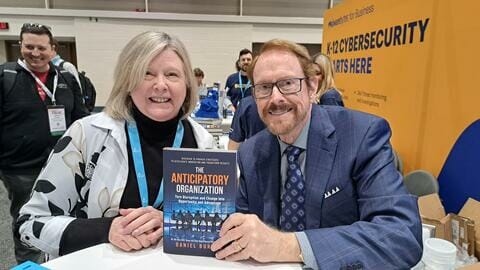ChatGPT officially launched on February 1. Since then, the education world has been on fire about how to manage it. School districts across the country, from New York to Seattle, have blocked the use of ChatGPT citing concerns about plagiarism and academic honesty. Cover your eyes, Henny Penny, the sky is falling.
On the other hand, there are those who look clear-eyed into the potential that artificial intelligence (AI) brings to the process of education. When applied to the generation of the high school essay, ChatGPT will produce a well-structured, factually correct (we think) piece of work. However, it cannot tell a student what they believe. The potential of ChatGPT to push students to the top-end of Bloom’s Taxonomy is significant. The ability to analyze, evaluate, and create will be required in this exercise. This is the stuff great education is made of.
ChatGPT is just one of many examples of AI employed today across virtually every industry. Machine learning is a subset of AI. In a nutshell, machine learning is the ability of a machine to digest huge quantities of data to identify and analyze patterns. Lesa Mone (2017) says, “The primary aim is to allow the computers to learn automatically without human intervention or assistance and adjust decisions accordingly.” So, what if we could take key data points from psychoeducational assessments from 10,000 kids with dyslexia and have the computer generate the instructional interventions delivered by AI informed bots?
While I believe this is certainly possible, is it preferable? What happens to education when you remove the relationship between student and teacher? Virtual learning during the pandemic stretched the limits of technology use to facilitate that relationship in new and unexpected ways. So, what exactly did we learn from it, and can it inform how we begin to meld AI into the purpose of improved instruction for all learners? While I don’t know all of the answers, I do know if we close our eyes to the use of the emerging technologies in front of us, we limit tremendous opportunities for our students. Uncover your eyes, Henny Penny, and look up.

Dr. Judy Jankowski
CBA Head of School
Dr. J and Daniel Burns, futurist, best-selling author, and former middle school science teacher and keynote speaker at the Future of Education Technology Conference in New Orleans. His message to educators was powerful: We are in the most transformational moment EVER in human history when it comes to education. It is up to us, as individuals and organizations, to determine whether we will be the disrupters or the disrupted. With the establishment of the Center for Educational Research and Technological Innovation (CERTI), CBA is taking on a leading role in the disruptor space.


